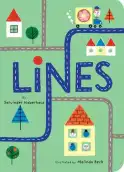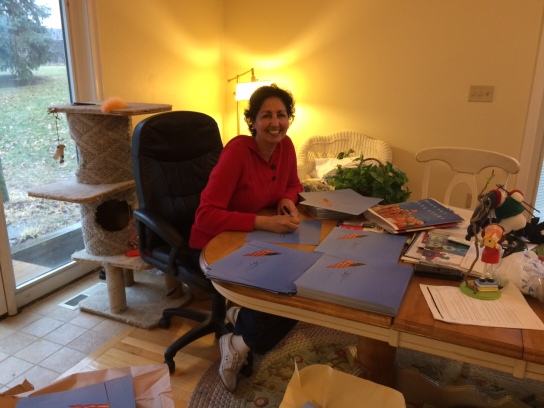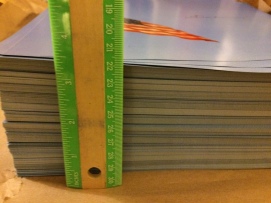Hi Donna Jo,
Thank you so much for joining me. You are such an accomplished author. I think that a lot of writers
would like to know the process a successful writer goes through when writing
one of their books.
1. Why/how/what made you decide to get into
writing for children?
I started writing as therapy -- to deal with a trauma.
But when I was finally recovering from my grief, I realized I loved
writing. I had a little daughter and I was reading her a zillion
books. So I thought I'd try my hand at that. Then I kept having
children (I have 5) and I kept trying that hand. :-)
2. Do you get an idea
and then plot the problem? Do you write with an outline or write as you
go? What does the writing process look like for Donna Jo Napoli?
Usually I get a character with a problem in my head and I
research the world I'd like to set the story in. Then I simply begin --
no outline -- just a knowledge of the world and the character.
But sometimes I'll be writing a historical tale or a fairy
tale that's already known -- then I am constrained (or I let myself be
constrained) by the historical facts or by the plot of the original fairy tale.
Again, though, I have no outline -- but I do have more than just a world
and a character.
I like to discover what happens next as it happens. My
story is born on the page. That's exciting for me. I find outlines
deadening (though I know writers who swear by them).
3. What does your revising process look like?
I finish a first draft and it is awful. (This is not modesty
talking; this is honesty.) So I inflict it on my family. They are
not kind. They are savage. So I listen and cry and then
rewrite. The second draft I bring to a school and read aloud and get
feedback from my target audience (which I hopefully discovered from the
comments on the first draft). Then I rewrite and that's generally what
goes to an editor. Usually the editor wants many changes... and usually
the editor is right.
4. About how long do you usually spend on one book—your average length from beginning to end before you think it is done (before
sending to agent)?
It can take me anywhere from a few months to several years
to have a draft that's ready for an editor to read. I'd say I average
about 1 year for a novel (but then the editing process takes another half year
at the least, and many times more). And I cannot guess how long for a
picture book. Most of them take me years and years. I'll work on
them between drafts of a novel -- and just fiddle and fiddle till I don't know
what else to do to them, so I figure I need an editor's help now.
5. What does a typical
day of writing look like in your life. I remember you mentioned something about
not sleeping a lot, and writing at late hours. When do you write, and how many
hours do you spend a week would you say?
When I was younger, I'd grab hours whenever I could and then
write like a fiend for as long as I could. But I'm old now and I cannot
stay up all night like I used to be able to. I still grab hours whenever
I can -- but usually they are morning hours on days when I don't teach any
classes (I teach linguistics). The number of hours I get to work each
week varies drastically. I might have a good week and be able to write 10
hours a day every day. I might have a week full of other obligations and
not be able to write at all -- at all, at all. It's not within my control
(and won't be, so long as I still have a salaried job).
 |
Donna Jo at a deaf conference in Siena, Italy, on 24 June 2015
|
6. How do you balance
historical background in your novels with plot and character? How much
research do you do and how do you decide what to use?
I love the research -- so I do a lot of it. I use
books as an opportunity to learn about other places and times and various
technologies and arts. Writing is my "university". I tend
to put tons of information in early drafts and then I have to weed out what
isn't needed on later drafts. What isn't needed? Well, basically
anything that doesn't help the plot move forward is not needed. That's a
bitter pill to swallow for someone who loves research. But if you think
of the child who's still struggling to read, you can console yourself as you
make your cuts -- But I must say that character comes first in all my
novels. I'm much more interested in why people do things than in what
they do.
7. What is your #1
advice that you have gotten about writing.
Write what only you can write.
(you need to interpret that ... which, of course, is the
tricky part ... but I think this is excellent advice)
8. What key pieces of
advice would you give? (Any advice to the aspiring
children's author?)
Write as much as you can, as often as you can, in as many
different modes as you can: letters, poems, short stories, recipes, directions
for making bird houses, novels, everything. The more you write, the
better you get.
And write out loud. Listen to what you write.
You will become your own best editor that way -- catching sentences that don't
work -- and finding dialogue that does work.
9. Is there a question
you wish somebody would ask you, so you could answer it? And could you please
answer it?
I don't know. My writing life is fairly private.
Maybe I wish people would ask me why I write -- because then
maybe I could try to figure out why I write. I think I do it simply in
order to create beauty. But what do I know?
10. Do
you have any new books coming out?
Yes, DARK SHIMMER is coming out this fall. It's a YA,
and it drove me crazy writing it. Gothic and twisted and very difficult
to write. It gave me nightmares (so I hope people will read it).
Thank
you again. It's so lovely to be in touch with you!
You're very welcome.
love,
Donna Jo

















